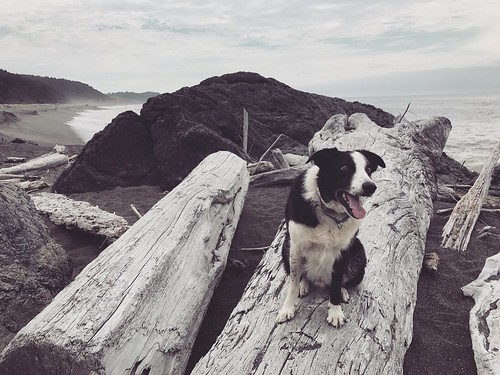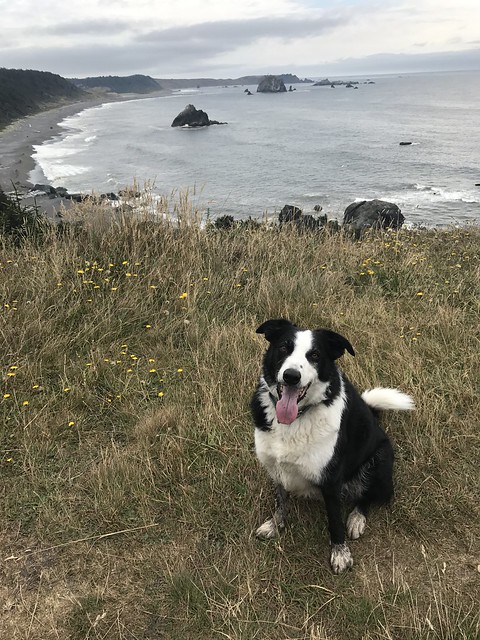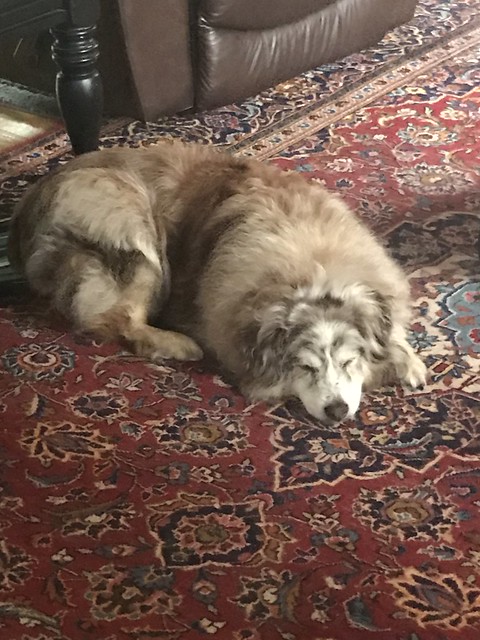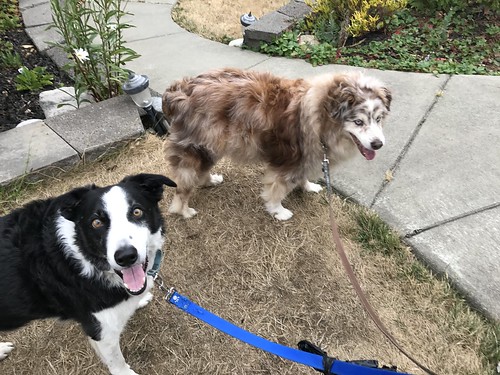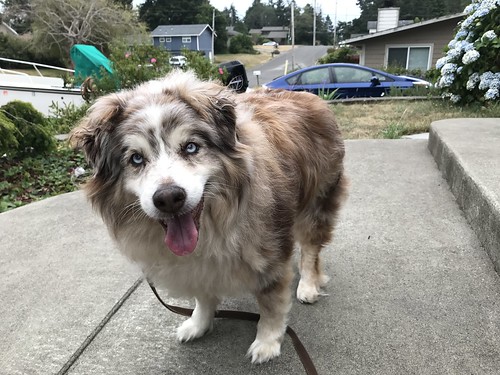The past couple of weeks have been a whirlwind- from preparing and then giving my final symposium presentation, to eclipse chasing, to working the Oregon State Fair, it has been a wild ride.
Let’s back up to week 9. Joe and I had finished our native oyster surveys, which sent us all around the bay to over well over 60 sites. I had helped in developing the qualitative methods, which were for determining the abundance of oysters at a site to a “level”, ranging from absent to high abundance. It is meant to take little time and to be repeatable. I wrote up those methods which will later be used to draft a final report, which I’m pretty excited about. I didn’t get too far with data analysis, because I barely had time to enter it all while also making my poster and final talk, but I do know that compared to the previous 2 studies in ’96 and ’06, there are more oysters in Coos Bay. More work will be done checking previously mitigated sites for successful recruitment and on determining range expansion.
Symposium day was in Newport at the Hatfield Marine Science Center on August 18, 2017. We were required to make a 4×3 foot poster of our summer work and prepare a 5-min talk paired with a visual presentation. Many hours of feedback and editing took place that week, but I was very pleased with my first ever academic poster. I also used Prezi for the first time for my talk (for those of you who don’t know, it’s an online resource that is kind of a step up from PowerPoint, with cool graphics and transitions), and though there were some technical difficulties, it looked great and I feel I still gave a well-delivered, informational talk. After the poster session that afternoon Julia and I took to Rogue Brewery for a celebratory drink to end the semi-stressful day.
Me and my lovely poster, titled “The science behind managing Oregon’s shellfisheries”.
In case you live under a rock, the great American eclipse was this past Monday! So, the day following the symposium Julia and I were headed inland. We were not going to risk staying on the coast and missing totality due to the fog, so in our search for a place to get the best viewing we were lucky enough to be invited to stay with a friend of her sister’s in Salem, OR which fell right in the path of totality (and, is loads warmer and sunnier than the south coast weather we’ve grown tired of). On the way to our final destination, we made a stop north of Newport in Depoe Bay, dubbed the Whale Watching Capital of the Oregon Coast by its visitor association. They have a resident pod of grey whales this time of year that are easily visible right off shore. Armed with Julia’s binoculars we spent over an hour making what must have been hundreds of spout, fluke, and back observations (if I had to guess there were at least a dozen animals there at the time). It was spectacular. 10000/10 would recommend. From there we took a nice drive from the coast through forest to the drier, grassier interior of the state. Julia mandated that we make a pit stop at Burgerville, a local chain that is locally sourced, sporting menu items like a marionberry shake. Again, 10000/10 would recommend. We met up with her family and family friends late that evening and spent Sunday afternoon doing a wonderful, waterfall-filled hike at Silver Falls state park. Monday morning it was time for the big event! We got up early to scope out a prime spot on the neighborhood golf course. We were surprised to find that we were one of only about 7 groups who had staked a claim there, after all the media hype about crowds and traffic and such (seriously, they were treating like a natural disaster- “stock up on food, water, gas, ahh!”). Equipped with our eclipse glasses and breakfast, we watched the entire thing from the start of the partial eclipse till the last bit of the sun peaked its way out from behind the moon. With the eyes of an excited child on Christmas morning, we all ooh-ed and ahh-ed as the temperature around us dropped and darkness began to creep in. We experienced about 2 minutes of totality, and it had everyone awe struck (I’m getting goosebumps writing about it). We popped champagne and toasted to the wonder of the universe. The “diamond ring” shone beautifully and an artificial sunset was created on the horizon. I’m so glad we went, and I think the whole event may have created a new wave of eclipse junkies.
My final week at work involved a couple more oyster surveys with Scott, measuring shrimp, and cleaning up data. On Wednesday, the office threw me a last-day-in -Charleston party, with a very pink heavily frosted chocolate cake. It was very sweet (the sentiment and the pastry). Thursday I made my last drive up 101 to Newport, as I’d be spending my last day of the program on Friday working the first shift at the ODFW shellfish display at the Oregon State Far! The 3-hr drive didn’t annoy me as much as the past few trips, being that it was the last time I’d be doing it. I listened to NPR and took in all the beauty and grandeur of the coast, and was very content. Upon arriving in Newport I met up with Liz, Ylva, and Graham and together we packed the trailer with display stuff, gallons upon gallons of frozen sea water, and the animals. We got to the fairgrounds in Salem late in the afternoon and between unloading, set up, and making sure the animals would be fine overnight (aka making sure the pump and chiller systems were operating correctly) it was a long day. We had dinner and finally got back to Liz’s where I was also staying at around 9 pm. It was all worth it though because we did not walk into a disaster Friday morning, the animals were A-OK, and we were able to finish setting up and even take a breather before the fair opened at 10:00. I had a blast working the exhibit; donning my very official beige button up, I talked to many Oregonians young and old for about 4 hours. We had an estimated 600 people (that’s a conservative estimate) during that time. I had some very meaningful interactions, including talking to an older gentleman about invasive green crabs and teaching a brave little girl how to hold and sex a crab- she got so comfortable with it, she began teaching others. I’m very happy to have gotten a taste of outreach experience (shout out to Liz for letting me crash family weekend, as her daughter was turning 3 and her parents were in town).
This weekend, I’m accompanying Julia on her drive home up to Seattle. Yesterday we stopped in Portland to check out Powell’s books and grab some food, and then made our way to Mount St. Helen’s! Such a cool place, full of interesting history and amazing landscapes. Shoutout to Julia for being my travel companion and closest friend throughout my time in Oregon, this summer wouldn’t have been the same without you. And to her family for opening their home to me and letting me pet their dogs.
I am very VERY excited to be home in a few days, but this summer has been a memorable and enriching experience for me and my career. I’ve gained skills and made connections that I know will benefit me greatly in the future, and I’m ready for whatever comes my way.
Over and out,
Katie







